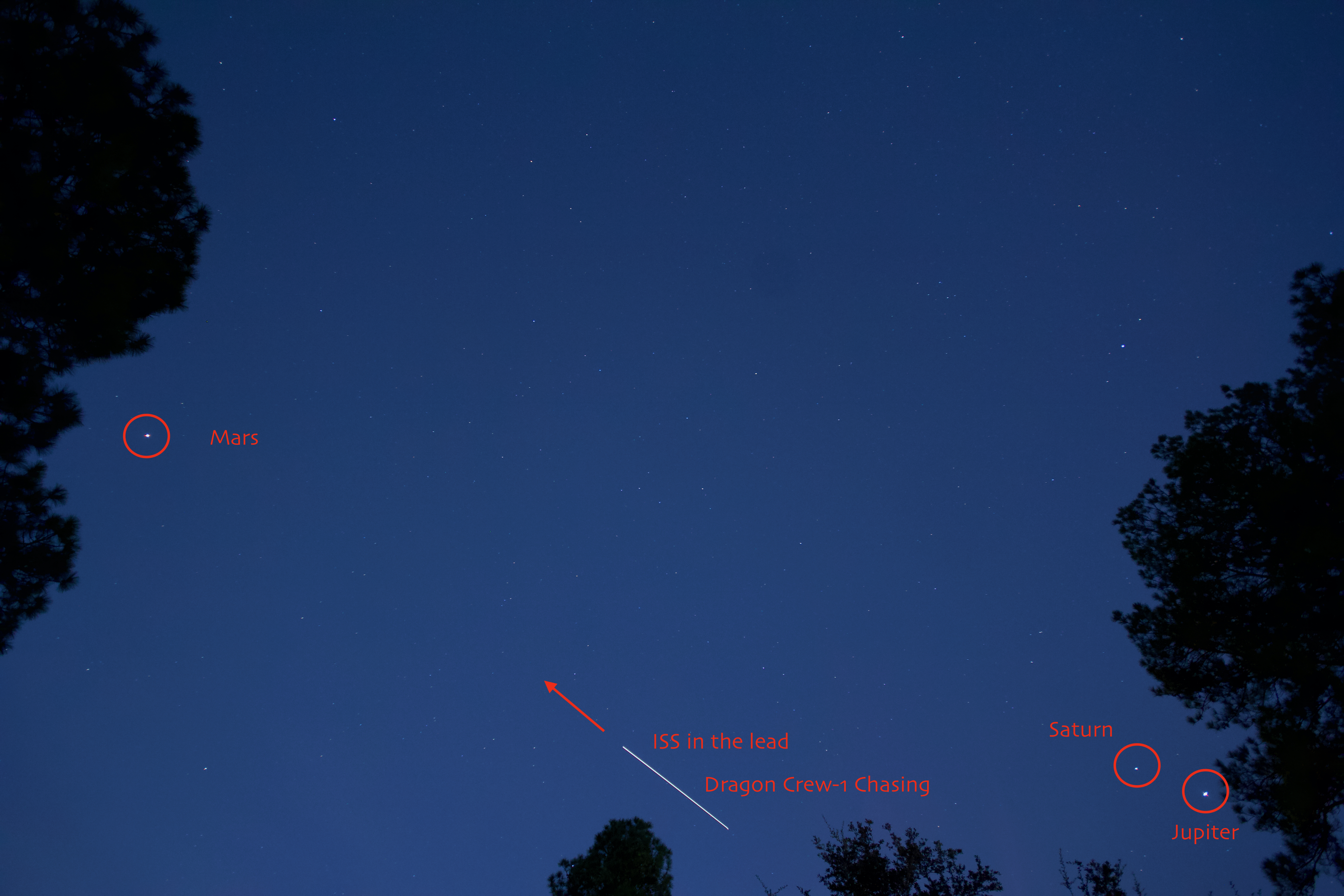
Since I’ve taken a sequence of pictures of Jupiter and Saturn together, I thought they would make a nice, though late, Christmas card, and I like having a message of hope.
Here are the dates for the planet pictures, from top to bottom:
- December 21, 2020 (Day of conjunction) Jupiter – Saturn
- December 22, 2020 (1 day after conjunction) Jupiter – Saturn
- December 19, 2020 (2 days before conjunction) Saturn – Jupiter
- December 17, 2020 (4 days before conjunction) Saturn – Jupiter
- December 26, 2020 (5 days after conjunction) Jupiter – Saturn
- December 27, 2020 (6 days after conjunction) Jupiter – Saturn
One of the things that is the most amazing to me is how much Jupiter’s moons (the 3 – 4 small dots around the more circular planet) move in just one day.
Camera Geek Info
- Canon EOS 60D in manual mode set at f/5.6, custom white balance 3500K
- December 21, 2020: ISO 2000, 1/10 second exposure
- December 22, 2020: ISO 100, 6 second exposure
- December 19, 2020: ISO 800, 1/10 second exposure
- December 17, 2020: ISO 800, 2 second exposure
- December 26, 2020: ISO 100, 2 second exposure
- December 27, 2020: ISO 100, 4 second exposure
- Canon EF 70-300mm f/4-5.6L IS USM lens, set at 300 mm, manual focus
- Cable release
- Tripod
Processing Geek Info
- Rotated so Jupiter’s moons were on the x-axis, shifted to black and white, and histogram adjusted in Photos
- Selected a region exactly 1200 pixels x 280 pixels in Preview
- Imported to PowerPoint and made transparent over green and blue background
- Saved as JPEG
- Histogram adjusted in Preview


















